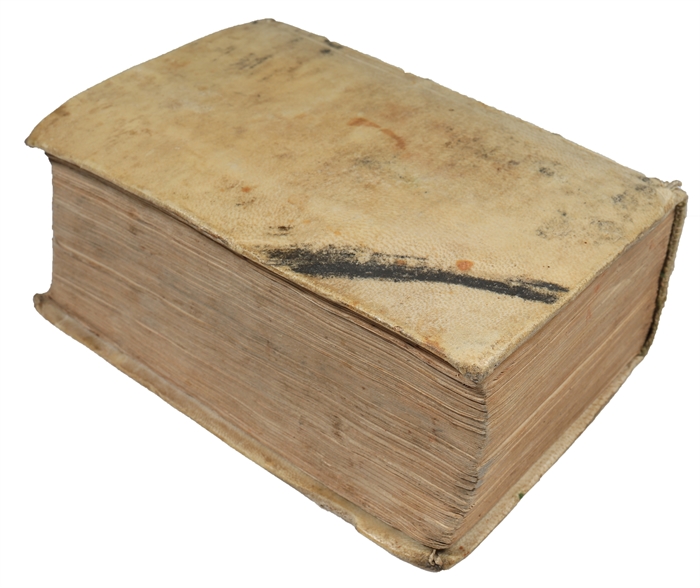THE MOST ATTRACTIVE ILLUSTRATED EDITION OF THE FIRST WORK OF LITERARY PROSE IN FRENCH
HOOGE, ROMAIN DE (HOOGHE, ROMEYN DE).
Les Cent Nouvelles nouvelles. 2 parts.
Cologne, Pierre Gaillard, 1701.
8vo. In contemporary vellum. Small paper-label pasted on to top of spine. Light wear and soiling to extremities. Previous owner's name (Peter Otto Rosenörn) to front free end-paper. Dampstain to inner upper margin of first half of book block. A few quires split in margin and a few plates closely trimmed, with minor loss in outer margin, otherwise internally nice and clean. (3), 397, (3), (24), 389 pp. + frontispiece and 100 etchings by Romeyn de Hooghe (included in the pagination).
First edition with Hooghe’s beautiful illustrations of this famous collection of tales modelled on Boccaccio’s Decameron. According to Brunet, two variants were published: one with text published below or above the engraving (The present copy) and one with engravings published separately. According to Brunet the former is preferable due to better printing quality. (Brunet I, 1735/1736). "Les Cent Nouvelles Nouvelles" stands as a cornerstone in the development of French literature and is regarded as being the first work of literary prose in French. Believed to have been composed around the 1460s at the court of Duke Philip the Good of Burgundy, this collection of tales offers a glimpse into the cultural and literary landscape of late Medieval France. The stories were collected and possibly edited by Antoine de la Sale (1385/86 – 1460/61). "Les Cent Nouvelles Nouvelles" were first printed by Antoine Vérard in 1486, twenty years after manuscript circulation (only one manuscript is known today). Romeyn de Hooghe (1645 - 1708), born in Amsterdam, was a multi-talented artist known for etching, drawing, painting, and sculpting. He became famous for his political caricatures of Louis XIV and propaganda prints supporting William of Orange. His work included early comic strips and illustrations for significant texts like "Hieroglyphica of Merkbeelden der oude volkeren" (1735). Historian Simon Schama lauded de Hooghe as the first great modern graphic satirist, highlighting his role in portraying conflicts between William III and Louis XIV as struggles for liberty against religious despotism. Brunet, II, 1735.
Throughout his career, de Hooghe produced over 3500 prints and adorned city maps with decorative borders. He was praised for inventive compositions in engravings and painted large panels for public and private spaces. Despite acclaim, he faced criticism later in life for his controversial subjects and lifestyle.
Graesse, II, 102.
Order-nr.: 61348








